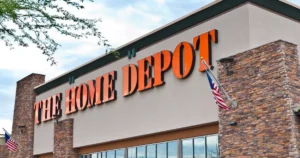
Understanding the Home Depot Rival’s Closure
In recent months, the retail industry has witnessed significant shifts, notably the closure of a major competitor to Home Depot. This decision did not occur overnight; rather, it was the culmination of various factors that have impacted the company’s stability and market position. Financial struggles, exacerbated by rising operational costs and debt, played a critical role in this unfortunate outcome. As consumer preferences evolve, many retailers have found it increasingly difficult to adapt their business models to meet new demands, which has only deepened the challenges faced by the rival in question.
The timeline leading to the closure began with weakened financial performance, including declining sales figures and shrinking profit margins. Internal reviews and shareholder pressures further illuminated the pressing need for strategic revisions. During this period, significant shifts in consumer behavior were also observed. Increased online shopping trends and a preference for convenience over in-store experiences forced traditional retailers to reconsider how they engaged with their customers. Companies that failed to embrace these changes have often faced dire consequences, leading to store closures and operational downsizing.
Moreover, external market dynamics played an influential role in the closure of the Home Depot rival. The entry of new players in the home improvement sector and aggressive pricing strategies from competitors widened the gap for those unable to evolve effectively. As the competitive landscape shifted, many businesses struggled to maintain their market share. This closure not only signifies the challenges that have enveloped this specific entity but also serves as a critical indicator of the retail landscape’s current state. The closure will likely ripple throughout the industry, prompting other retailers to reevaluate their strategies to avoid a similar fate. This situation raises pertinent questions regarding the future sustainability and adaptability of traditional retail in a rapidly changing environment.
Market Implications of the Closure
The recent closure of a major competitor in the home improvement sector has significant implications for the retail landscape, particularly for Home Depot. This development is poised to influence Home Depot’s market share, as customers seeking alternative options may gravitate towards the leading brand. With less competition, Home Depot may experience an influx of new customers, leading to potential growth in sales and an expansion of their customer base.
As Home Depot potentially gains market share from this closure, its customer loyalty could see a significant boost. With a decrease in rival options, consumers may consolidate their purchasing behavior with Home Depot, thus solidifying their brand preference. This phenomenon could also lead to increased customer retention rates, as loyal customers are less likely to explore alternatives in the absence of viable competition. However, it is crucial for Home Depot to remain vigilant, as customer loyalty can be fragile and susceptible to shifts in service quality, pricing, and product offerings.
In response to this evolving landscape, Home Depot may need to adjust its pricing strategies. With fewer competitors, the company could be tempted to increase prices; however, this could risk alienating price-sensitive customers. Therefore, striking a balance between maintaining profitability and keeping prices competitive will be essential. Additionally, the closure could trigger opportunistic behaviors from Home Depot, such as promotional campaigns designed to attract new customers or enhancing loyalty programs aimed at retaining existing ones.
Moreover, the closure of a rival does not imply a lack of competition. Other retailers, both direct and indirect, may view this as an opportunity to capture market share. Home Depot must monitor these competitors closely to mitigate any unfavorable impacts on its business while leveraging its newly acquired advantages effectively.

Reactions from Consumers and Industry Experts
The recent announcement regarding the home depot rival closing has elicited a wide array of reactions from both consumers and industry experts. Many consumers have expressed their concerns over the potential impact on competition within the home improvement sector. A survey conducted among homeowners indicated that nearly 65% of respondents were apprehensive about the implications of reduced choices in products and services. This sentiment is particularly pronounced among DIY enthusiasts who value the diversity of offerings that various retailers bring to the market.
Industry experts have weighed in on the changing dynamics in the retail landscape, noting that while the closure may streamline operations for some players, it could also lead to price hikes and limited selections. According to a market analyst at a prominent research firm, “The closing of a major competitor like this may lead to a recalibration of pricing strategies across the industry, potentially disadvantaging budget-conscious consumers.” This analysis underscores the notion that fewer competitors in the retail space may significantly alter consumer experiences and expectations.
Additionally, consumers have voiced concerns about service quality following the exit of a rival. Many shoppers have pointed out that competition often drives retailers to enhance their customer service and product availability. Mike Thompson, a frequent home improvement shopper, stated, “I fear that with one less option, the incentives for companies to prioritize customer service will diminish.” Experts also suggest that consumer habits tied to loyalty programs and shopping frequency may change, as shoppers adapt to the new market landscape.
In summary, the closure of this home depot rival is generating a compelling set of reactions that reflect both consumer anxiety and expert foresight. The ongoing evolution in retail strategies may influence not only product availability but also the overall shopping experience as consumers navigate this new reality.
Future Outlook for Home Improvement Retail
The recent closure of a key Home Depot rival has ushered in a period of uncertainty within the home improvement retail sector. As the competitive landscape shifts, industry stakeholders must adapt to evolving market dynamics and consumer preferences. One potential trend is an increased focus on digital transformation. Retailers may leverage technology to enhance customer experiences, streamline operations, and improve supply chain efficiency. Home Depot, already a leader in this domain, may further innovate digital platforms to engage shoppers more effectively.
Another aspect likely to shape the future of home improvement retail is the rising preference for sustainable and eco-friendly products. As consumers become more environmentally conscious, retailers, including Home Depot, could respond by expanding their offerings of green products, such as energy-efficient appliances and sustainably sourced materials. This shift not only aligns with consumer values but also positions Home Depot to capture a larger share of this increasingly lucrative market segment.
Moreover, as the home improvement sector continues to evolve, collaboration and partnerships could become more prevalent. Home Depot and other competitors might explore strategic alliances with local contractors and service providers, creating integrated service offerings that enhance customer satisfaction. Additionally, a growing emphasis on customization and personalization in home improvement projects may drive retailers to offer tailored solutions, further differentiating their brands in a competitive landscape.
While the closure of a rival may create initial challenges, it also presents an opportunity for Home Depot to solidify its market position. The long-term sustainability of its growth may depend on the company’s ability to adapt to these emerging trends while continuing to meet customer demands. By embracing innovation and responsiveness, Home Depot can remain resilient in the ever-changing home improvement retail environment.




